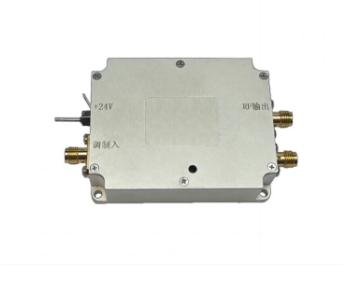Real-Time Adaptive Control of AOM Drivers for Holographic Displays

Holographic displays are revolutionizing augmented reality (AR), virtual reality (VR), and 3D visualization by projecting high-resolution, dynamic light fields. A critical component in these systems is the Acousto-Optic Modulator (AOM), which controls the intensity and phase of laser beams to form holograms. However, maintaining precise and stable AOM performance requires real-time adaptive control of its driver electronics.
The Role of AOM Drivers in Holography
AOMs work by diffracting laser light via an acoustic wave generated by a piezoelectric transducer. The driver must supply a high-frequency RF signal with precise amplitude and phase modulation to ensure accurate hologram reconstruction. Any instability—such as thermal drift, electrical noise, or component aging—can degrade image quality.
Challenges in AOM Driver Control
Thermal Effects – Temperature fluctuations alter the AOM’s diffraction efficiency and resonance frequency.
Nonlinearities – The relationship between input voltage and optical output is not perfectly linear.
Dynamic Load Changes – Rapid updates in holographic content require fast driver response.
Real-Time Adaptive Control Solutions
To overcome these challenges, modern holographic displays implement closed-loop adaptive control for AOM drivers:
1. Feedback-Based Calibration
Optical sensors monitor the diffracted beam’s intensity and adjust the RF driver in real time.
Machine learning algorithms predict and compensate for thermal drift.
2. Dynamic Frequency Tuning
AOMs have a center frequency that shifts with temperature. Adaptive drivers track this shift using phase-locked loops (PLLs) and adjust the RF signal accordingly.
3. Pre-Distortion Compensation
Nonlinearities in the AOM’s response can be corrected by applying an inverse distortion curve to the input signal.
4. FPGA-Enabled Low Latency Control
Field-programmable gate arrays (FPGAs) allow ultra-fast feedback loops (<1ms), ensuring smooth hologram transitions.
Benefits for Holographic Displays
Higher Fidelity – Reduced artifacts and better contrast.
Improved Stability – Consistent performance under varying conditions.
Energy Efficiency – Optimized RF power reduces heat generation.
Conclusion
Real-time adaptive control of AOM drivers is essential for next-generation holographic displays. By integrating feedback systems, dynamic tuning, and AI-driven calibration, engineers can achieve the precision needed for lifelike holograms. As AR/VR technology advances, adaptive AOM control will play an increasingly vital role in delivering seamless, high-quality visuals.
- Art
- Causes
- Crafts
- Dance
- Drinks
- Film
- Fitness
- Food
- Παιχνίδια
- Gardening
- Health
- Κεντρική Σελίδα
- Literature
- Music
- Networking
- άλλο
- Party
- Religion
- Shopping
- Sports
- Theater
- Wellness


